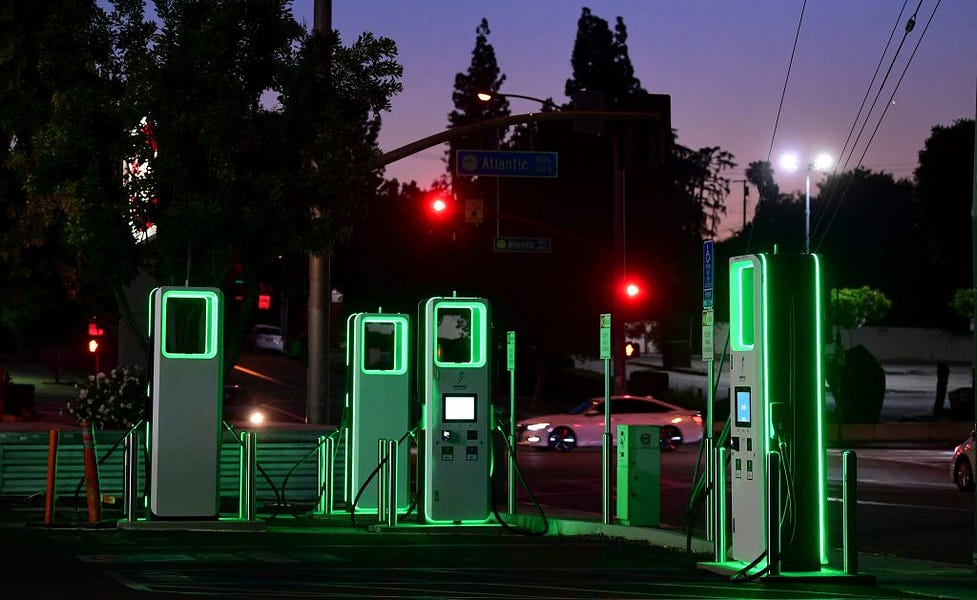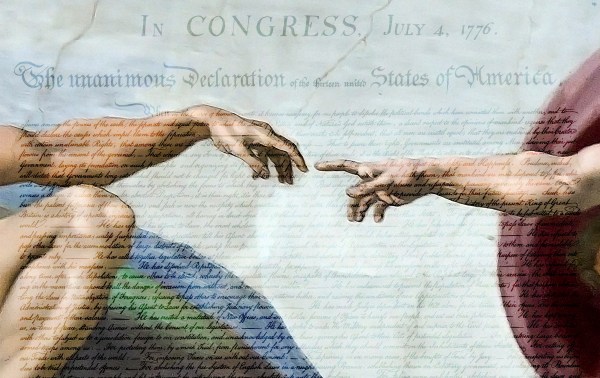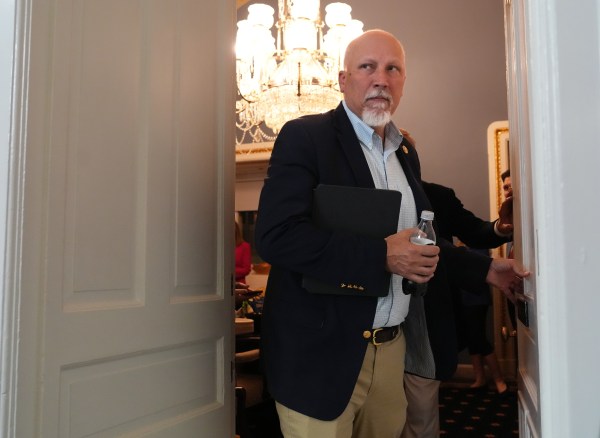Infrastructure has been a hot topic on Capitol Hill for weeks. The bipartisan framework failed a key test vote on Wednesday, and it’s unclear how it will merge with the House’s surface transportation reauthorization bill or whether Democrats will go it alone and fold either or both of those bills into their larger budget reconciliation package.
If some version of one of these bills passes, electric vehicles are primed to receive a boost. Most notably, the original bipartisan agreement allocates $7.5 billion for public EV fast charging stations across the country.
“Electric vehicles have finally a seat at the table here in Washington,” Nick Nigro, founder of the policy tech firm Atlas Public Policy, told The Dispatch. “In each one of those three bills, you have dedicated money for electric transportation. … I think we’re going to see something at the end that’s going to send a signal to the market … that Washington is willing to put some investments in technology and really try to bring the U.S. in a better position of leadership.”
These investments follow on the heels of a decade of innovation—what Nigro described as “a marvel, frankly, of technology and engineering.” Today, the median EV range—the distance the vehicle can travel on a single charge—is over 250 miles, nearly four times what it was a decade ago. The most popular vehicle in America, the Ford F-150, can now be purchased as a relatively affordable EV, and it’s in high demand: As of last month, more than 100,000 pre-orders had been placed for the new Ford F-150 Lightning. (For comparison’s sake, in 2019 Ford sold fewer than 900,000 F-150s.)
In addition to improvements in technology, engineering, and manufacturing, the market forces of the global economy have played a role in accelerating the adoption of EVs. “Automakers are global companies, and they have to pay attention to policies and incentives and consumer preferences around the world,” Kate Whitefoot, an engineering and public policy professor at Carnegie Mellon University, told The Dispatch. EVs make up over 10 percent of the automobile market in much of Europe, according to a recent Pew survey. Although the EV share of the market is still much lower in the U.S., it more than tripled between 2016 and 2020. “Many automakers, now looking at that sort of landscape, have moved towards being all-in on electric vehicles,” Whitefoot said.
In the early days of EVs about a decade ago, supply was limited and demand low. Chargers were both difficult to access and inconveniently slow, the vehicles and their batteries were prohibitively expensive, and America’s cheap gasoline compared to the rest of the world made conventional vehicles the obvious economical choice. On top of that, many Americans prefer larger vehicles like pickup trucks and SUVs, which have been some of the last models to turn electric.
Those challenges still exist, but to a lesser degree. Whitefoot explained that “network effects” in the economy also dampened demand for a while, but that is starting to shift as well. “If a new technology comes along and I don’t have experience with that technology, and I don’t know other people that have an electric vehicle, I might be more hesitant to purchase an electric vehicle for all types of reasons, right? And as others adopt them, and I see them driving them and maybe I get more experience myself driving an EV, then I can sort of understand it more and feel more comfortable with it, and that increases my chances of considering purchasing an EV the next time I go to buy a vehicle.”
The investments being talked about in Congress are designed to help ameliorate some of the costs of purchasing and driving EVs and increase demand. Biden’s original proposal included new subsidies to lower the cost to the consumer. While those subsidies were nixed during negotiations, the public charging stations being proposed are fast charging and can provide “80 percent of the charge in approximately 30 minutes,” Whitefoot said, in contrast to the 6-to-8-hour charges typical of at-home units.
Nigro said he views the $7.5 billion for charging stations as more of a down payment than anything else. A recent Atlas Public Policy analysis found that “to achieve 100 percent passenger electric vehicle sales by 2035 and put the nation on the path to full electrification, over $87 billion in investments in charging infrastructure will be needed over the next decade, including $39 billion for public charging.”
Not all of that money needs to come from the federal government, however. State governments and private sector investments are keeping pace. Just this week, Tennessee announced a partnership with Rivian to place charging stations in all Tennessee state parks, and Georgia announced a new initiative to “further enhance the state’s attractiveness to the electric mobility industry and foster innovation in related fields.” And Electrify America, the largest private-sector investor, emerged as a result of a massive Volkswagen emissions settlement in 2016 but has now said it will continue investing beyond what is required.
One common criticism of EVs is that they are only as clean as the electricity they use, and extracting rare minerals like cobalt and nickel from the ocean floor for use in EV batteries comes with serious environmental costs. Still, Whitefoot said EVs are already cleaner than conventional vehicles in many parts of the country. From an emissions standpoint, the average EV in the U.S. “produces global warming pollution equal to a gasoline vehicle that gets 93 miles per gallon,” according to the Union of Concerned Scientists, though that efficiency varies by region. Whitefoot also suggested widespread adoption of EVs may put pressure on further cleaning up the electrical grid.
“There’s an old adage in electric transportation land that the dirtiest day for your EV is the first day,” Nigro said. “The grid has been getting cleaner in every segment and corner of the country the last decade, and there’s no evidence to suggest that those trends won’t continue.”
Ultimately, Nigro is confident EVs will continue to grow as a share of the automobile market. “The evidence is mounting, and it’s not just from the optimistic, green, environmental advocacy groups,” he said. “I think if we fast forward out to the end of the decade, you’re gonna see wide scale adoption in many segments, maybe not all segments by then, but many segments, because the cost-effectiveness will be there. And, frankly, it’s just a better drive train, it’s a better driving experience. So that’s going to eventually win the day for the consumer.”






Please note that we at The Dispatch hold ourselves, our work, and our commenters to a higher standard than other places on the internet. We welcome comments that foster genuine debate or discussion—including comments critical of us or our work—but responses that include ad hominem attacks on fellow Dispatch members or are intended to stoke fear and anger may be moderated.
With your membership, you only have the ability to comment on The Morning Dispatch articles. Consider upgrading to join the conversation everywhere.